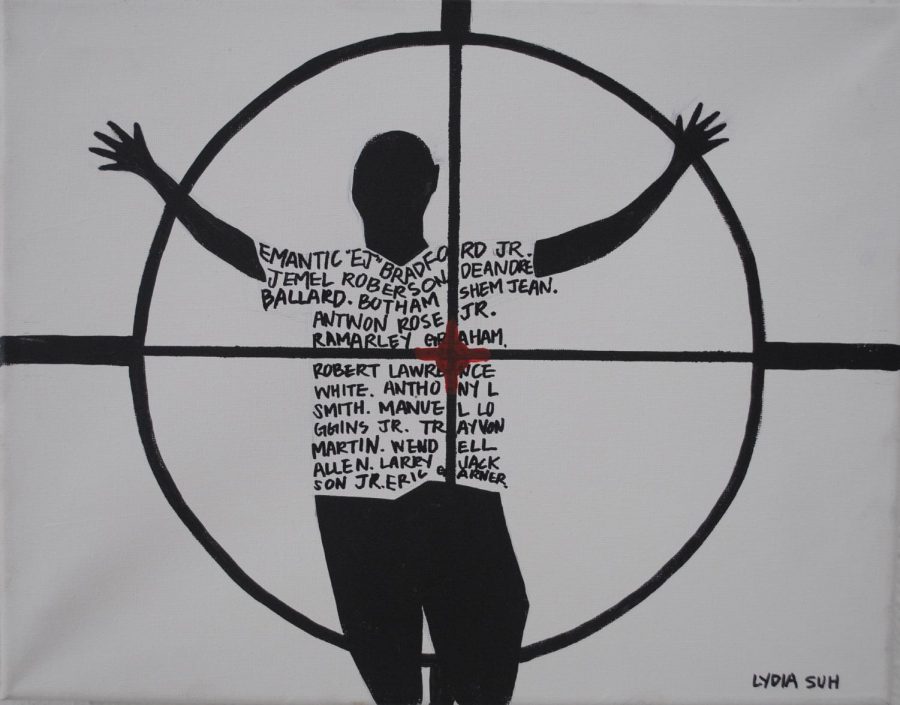Art contest for societal progress displays work
Exhibit features pieces created by students in variety of styles, tones
ALYSSA STANFIELD | THE DAILY EVERGREEN
‘Don’t Shoot’ by Lydia Suh hangs in Gallery 3 of the Fine Arts building Tuesday.
February 20, 2019
The annual Arts for Social Change competition will exhibit student work in Gallery 3 of the Fine Arts building until Mar. 1.
Kenzie Koehn, former project coordinator at WSU, and Ana Rodriguez-Vivaldi, associate dean of student affairs and global education in the College of Arts and Sciences, started the competition, according to the press release. They molded it into a celebration of student art.
The purpose of this competition is to celebrate the creative works that students submit in honor of MLK, said Lauren Jasmer, a WSU administrative assistant who helped coordinate the event.
“Art is very powerful,” Jasmer said, “and it’s a way for students and others to creatively express their feelings, their perceptions, their experiences.”
Jasmer said that organizers want the competition to have a broad scope. They accepted any type of submission for the competition, which had four available categories to submit to: Remembering MLK, Social Justice in Action, Community-Building at WSU and Campus Civic Poet, according to the press release.
Organizers centered the competition on student expression, Jasmer said, and confining artists to one specific theme would have been too limiting to potential submissions.
Jasmer said a panel of faculty members from the Martin Luther King committee, the English department and the Fine Arts department reviewed every piece.
“Sometimes there’s one that just speaks to them,” she said. “Sometimes … you see [a piece] and immediately you’re like, ‘Oh, my gosh, that’s totally it.’ ”
She said in years past, the competition submissions have been available for one day only in the CUB. However, organizers wanted to give students more time to see the exhibit.
“We need to … honor them,” Jasmer said, “and [say], ‘Look at how awesome they are!’ ”










